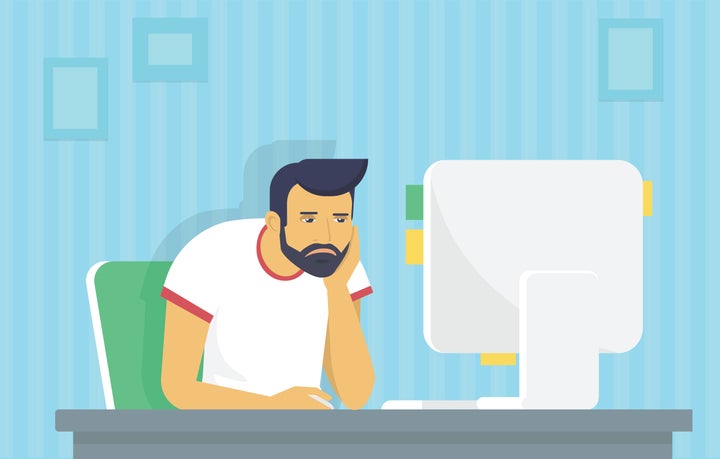The average Brit spends 50 days a year gawping at their phone screen – and that’s not even taking into account the hours many office workers (us included) spend staring at computer screens all day. Is it any wonder our eyes are tired?
Signs of computer eye strain, also known as visual fatigue or computer vision syndrome (CVS), include headaches; sore, tired or itchy eyes; difficulty focusing; watery or dry eyes; blurred or double vision; and increased sensitivity to light.
It’s estimated that half of computer users suffer with CVS – so if you’ve experienced one or more of the symptoms, you probably need to start resting your eyes throughout the day.
The signs of CVS are often overlooked and, if left unchecked, could lead to long-term eye health issues, they said. So what can you actually do about it?

1. Follow the 20:20:20 rule.
Essilor recommends people follow the 20:20:20 rule throughout the day to ensure they take regular breaks away from their screens. Every 20 minutes, look at something 20 feet away for 20 seconds. This relaxes the focusing muscle inside the eye.
2. Do eye yoga.
Look to the left, hold the position, repeat looking right. Look up, hold the position, repeat looking down. Repeat four times, closing your eyes and relaxing in between. Try this as a break for your eyes throughout the day.
3. Head to the opticians.
If you work with computer screens and can’t remember the last time you had an eye test, it might be time you booked one. This should be a priority for people who are experiencing any of the visual fatigue symptoms. You should be having an eye test every two years, minimum.
The Health and Safety (Display Screen Equipment) Regulations 1992 stipulate that employees using Visual Display Units (VDUs or computer monitors) should be provided with an eye examination, funded by their employer, when requested. So there’s really no excuse.
4. Get special lenses on your glasses.
If you’re looking at a screen all day, you can buy a special coating for your lenses that reduces the glare from ultraviolet and blue-violet light, associated with premature eye ageing. Ask your opticians for more information.
Contact lens wearers are advised to switch to glasses when using computers for long periods of time as they are more likely to end up with dry eyes.
5. Sort your lighting out.
Eye strain can be caused by excessive sunlight coming in through the window or by bright room lighting, according to Specsavers. If you can, partially close curtains or blinds to reduce the brightness from outside, reduce the lighting in the room, or avoid sitting under big, overhead fluorescent lights. The opticians advises using floor lamps instead.
6. Go outdoors.
It’s important to take a break from screens and go outside. Looking at objects in different distances and in natural light can be beneficial for your eyes and sight – so don’t eat lunch at your desk, get outside if you can.